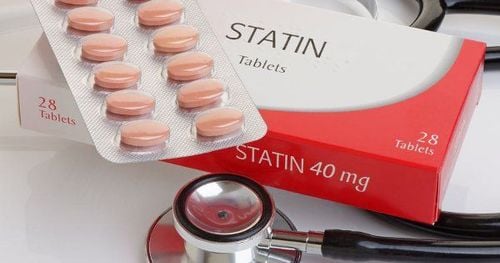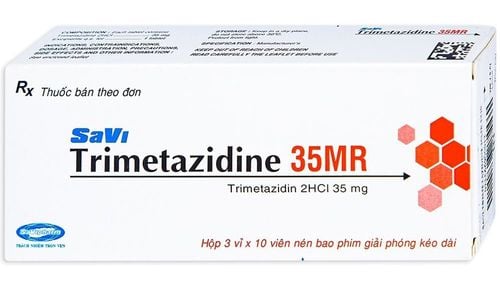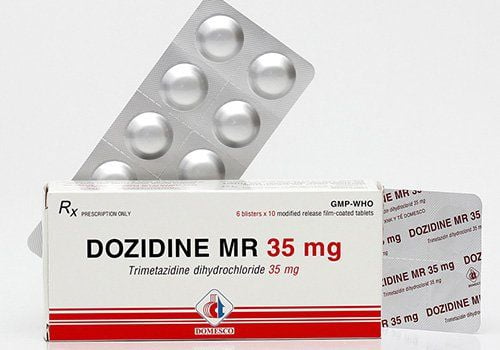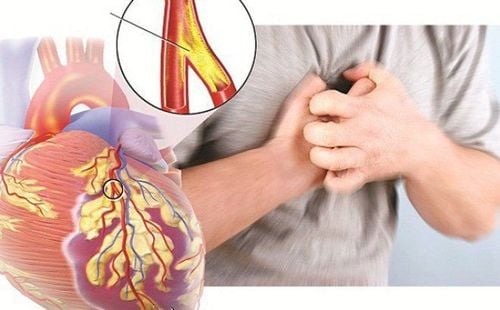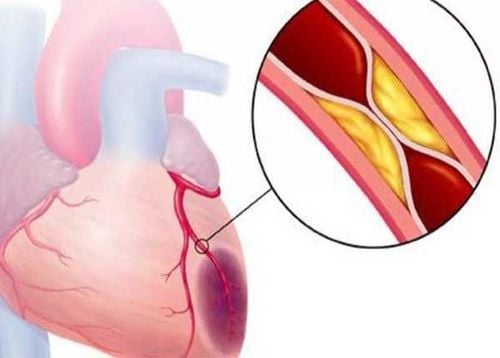This is an automatically translated article.
The article is professionally consulted by Master, Doctor La Thi Thuy - Cardiovascular Center - Vinmec Central Park International General Hospital
Acute coronary syndrome is an emergency condition of coronary artery disease, the leading cause of cardiovascular death and serious complications later, in which, myocardial infarction accounts for the leading rate in cardiovascular diseases. acute coronary events.
1. What is acute coronary syndrome?
Acute coronary syndrome is a term that refers to any clinical presentation associated with an acute coronary event, describing all patients presenting with acute myocardial ischemia. , which includes unstable angina, non-ST-segment elevation myocardial infarction, and ST-elevation myocardial infarctionAcute coronary syndromes without ST-segment elevation include two forms: myocardial infarction non-ST-segment elevation and unstable angina. Clinically and electrocardiographically there is no difference between these two conditions, the difference is that myocardial infarction without ST-segment elevation has increased myocardial biomarkers on laboratory tests, and angina does not. There is no stability.
2. International consensus definition of myocardial infarction (4th edition)
The term myocardial infarction is used when there is acute myocardial injury with clinical evidence of acute myocardial ischemia and elevation of troponin with at least one value above the 99th percentile, accompanied by at least one of the following:Symptoms of myocardial ischemia. 2. New ischemic ECG changes.
3. Have pathological Q waves.
4. There is new imaging evidence of myocardial dysfunction or regional movement disturbances in a setting consistent with ischemia.
5. Noting coronary thrombosis on coronary angiography or autopsies
3. Causes and mechanism of acute coronary syndrome

Tuổi tác là một yếu tố nguy cơ trong bệnh động mạch vành
In the event that the heart muscle cells do not die, the lack of blood supply also causes the cells to be damaged (either temporarily or permanently), they will no longer function as they should, and This condition is called unstable angina.
Risk factors for acute coronary syndrome include:
Age High blood pressure Hypercholesterolemia Smoking Sedentary lifestyle, sedentary diet Unhealthy diet Overweight, obesity Diabetes Family history of chest pain, heart attack or stroke History of high blood pressure, preeclampsia, or gestational diabetes. Mechanism of blood clot formation: when atherosclerotic plaque ruptures, the subendothelial layer is exposed and exposed to platelets, leading to activation of GP IIb/IIIa receptors on the platelet surface and activation of platelet aggregation. platelet aggregation. In addition, this agglomeration of platelets releases a variety of mediators that cause vasoconstriction and accelerate clot formation.
3.1 Mechanism of formation of acute ST-segment elevation myocardial infarction Infarction Acute ST-segment elevation myocardial infarction occurs usually when there is an acute complete occlusion of coronary artery lumen due to a thrombus in the coronary artery. This thrombus mostly forms on the background of atherosclerotic plaque in the coronary artery or rarely comes from elsewhere (thrombus from the heart chamber).
When atherosclerotic plaque of the coronary artery becomes unstable (capsule is cracked, ulcerated), platelets circulating in the blood will come to adhere to the damaged endothelium beneath the plaque. Then, through the process of platelet aggregation, the formation of platelet thrombus causes further narrowing of the coronary lumen. Finally, the formation of fibrin-rich red thrombus will completely block the epicardial coronary artery leading to transmural myocardial infarction.
Some other cases that can also cause coronary artery occlusion are: congenital coronary artery abnormalities, coronary artery inflammation, coronary artery spasm, coronary artery occlusion in the setting of arterial dissection. motherboard.
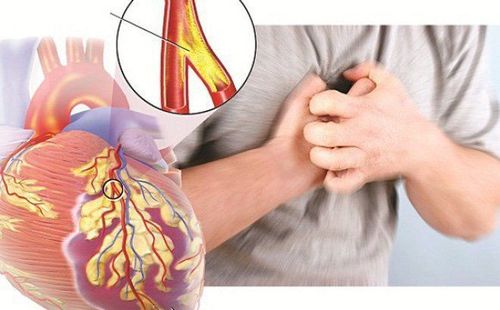
Huyết khối gây nhồi máu cơ tim đa phần hình thành trên nền mảng vữa xơ trong lòng mạch vành
3.2 Mechanism of development of acute coronary syndrome without ST-segment elevation The mechanism of acute coronary syndrome without ST-segment elevation is the instability of the atherosclerotic plaque, and the plaque ruptures. Smaller ruptures and clots that only partially occlude the coronary arteries are known as non-ST-elevation acute coronary syndromes. In addition, the migratory mechanisms of small thrombus cause posterior microvascular occlusion and constriction further exacerbating myocardial ischemia. However, non-ST-segment elevation acute coronary syndrome can be severe and lead to true myocardial infarction.
The consequence of unstable atherosclerotic plaque is a severe and rapid decrease in blood flow to the area of myocardium nourished by that coronary artery, and clinically manifest as unstable chest pain, on the electrocardiogram. May be the picture of acute myocardial ischemia with ST-segment depression or sharp T-negative, troponin-type cardiac enzymes may be elevated in the presence of severe myocardial ischemia causing necrosis of the distal myocardium, in the presence of CK-MB then it can be called a myocardial infarction without Q wave. In fact, some factors can make the disease worse: fever, high blood pressure, arrhythmia, hyperthyroidism.
Vinmec International General Hospital provides customers with a Coronary Cardiovascular Disease Screening Package to help customers proactively check for the above signs and prevent risks early.
Customers can directly go to Vinmec Health system nationwide to visit or contact the hotline here for support.
Master. Dr. La Thi Thuy is currently an interventional cardiologist at Vinmec Central Park International General Hospital. Graduated as a general practitioner from the University of Medicine and Pharmacy in Ho Chi Minh City. Ho Chi Minh City in 2010, and graduated with a master's degree in cardiology from the University of Sheffield (UK). Doctor Thuy Trained in practicing cardiology at Royal Hallamshire hospital. The doctor has worked at the Department of Interventional Cardiology, Cho Ray Hospital from 2012-2016.
Please dial HOTLINE for more information or register for an appointment HERE. Download MyVinmec app to make appointments faster and to manage your bookings easily.
Article referenced source: mayoclinic.org



